Obon (お盆) and Bon Odori (盆踊り) are time-honoured traditions in Japan, where ancestral spirits are celebrated through dance, rituals and traditional customs. Obon is a time for families to gather together and honour their heritage.
Table of Contents
- What is Obon? What is Bon Odori?
- The History of Obon
- Obon Customs and Traditions
- Bon Odori, The Dance to Welcome Ancestral Spirits
- Bon Odori and Obon Around the World
What is Obon? What is Bon Odori?
お盆 (Obon) is an annual Buddhist event held annually in Japan to celebrate and honour one’s ancestors. It is believed that ancestral spirits temporarily return to the living realm during Obon to visit their loved ones. There are many customs and traditions associated with Obon, including hanging lanterns in front of houses to guide the spirits home, visiting graves, making 精霊馬 (shouryouuma), and food offerings.
Among the many Obon traditions there are, the most famous and perhaps the centrepiece of Obon is 盆踊り (Bon Odori). Bon Odori means “Bon Dance”, in other words a dance for Obon. Bon Odori is held all over Japan, and nowadays even outside Japan as a way to spread Japanese culture. The dance is performed as a way to welcome the return of the ancestral spirits, as well as a send off. In recent times however, this aspect of Bon Odori has diminished. Bon Odori has, in many places, been reduced to being the main event of summer festivals and done more for the fun of it rather than being a religious affair.
When is Obon?
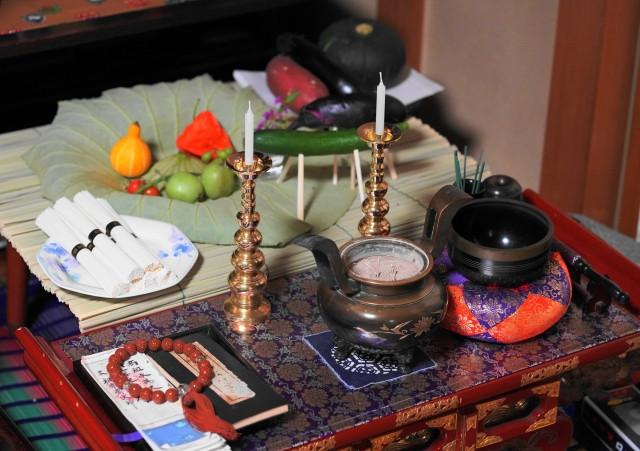
Obon is celebrated at different times depending on the region and area.
Traditionally, Obon is celebrated on the 15th day of the 7th month of the lunar calendar, which means the date is different every year but always falls between early August to early September. However, when Japan adopted the Gregorian calendar during the Meiji era, the period for Obon shifted to accommodate the new calendar system. This gave rise to a total of 3 different timing for Obon which consists of 旧盆, 7月盆, and 8月盆.
旧盆 (Kyuu-Bon)
Translates to “Old Bon”. Kyuu-Bon follows the traditional period which starts on the 15th day of the 7th month of the lunar calendar. This is usually around mid August to early September. Places that celebrate Obon on Kyuu-Bon are Okinawa, Chugoku, Shikoku, Kyushu, and some parts of the Kanto region.
新暦7月盆 (Shinreki Shichigatsu Bon)
新暦 (Shinreki) means “Gregorian calendar”. This period is also simply known as 7月盆 (shichigatsu-bon), aka July Bon. Basically, the traditional “15th day of the 7th month of the lunar calendar” was changed to July 15 of the Gregorian calendar. Places that practise July Bon hold it over a 4 day period from July 13 to 16 with July 15 being the centre date. Tokyo, Kanagawa, parts of Hokkaido, Kanazawa City in Ishikawa, and urban areas in Shizuoka follow this timing for Obon.
新暦8月盆 (Shinreki Hachigatsu Bon)
Also simply known as 8月盆 (hachigatsu-bon), aka August Bon. August Bon is considered to more accurately follow the lunar calendar (旧盆) where Obon is usually around August. Obon is held over 4 days from August 13 to 16 in this period. Places that practise Hachigatsu Bon include Hokkaido, Tohoku, Kansai, Niigata, Nagano, etc. places. Majority of places in Japan follow this Obon schedule.
To summarise, Obon is generally held for a 4 day period from August 13 to 16. However, there are certain regions or places that celebrate Obon in July, or following the lunar calendar.
Is Obon a public holiday in Japan?
No, Obon is not listed as a public holiday in Japan. Banks and government offices operate as normal.
However, you will find that many companies and shops will close during the Obon period. Some places will coincide summer holidays with the Obon period, or will simply allow employees to take a few days or even a week off for Obon. There is an understanding that the Obon period is an important time for people to travel back to their hometowns to be with their families.
Obon is considered as one of the long holidays in Japan alongside 年末年始 (nenmatsunenshi) - Year End New Year and Golden Week.
Writer's Pick
The History of Obon
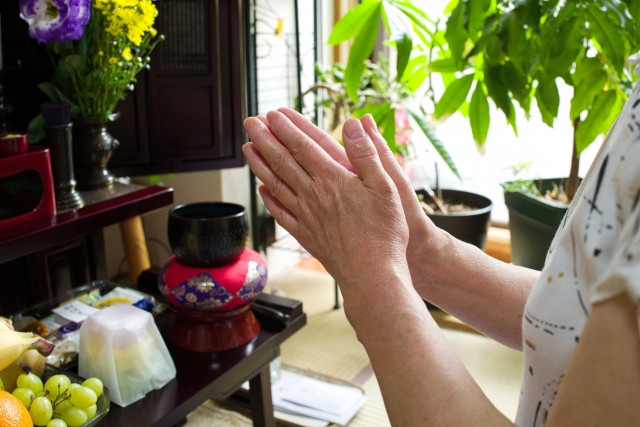
The term お盆 (Obon), or 盆 (Bon), is an abbreviation of the name of a Buddhist festival called 盂蘭盆会 (urabone). 盂蘭盆会 (Urabone), or 盂蘭盆 (Urabon), itself is derived from the Sanskrit word “Ullambana”. Ullambana means “deliverance from suffering” and is a word taken from the Ullambana Sutra.
The Ullambana Sutra describes the tale of Maha Maudgalyayana (Mokuren), a disciple of the late Buddha, who saved his late mother from damnation.
Mokuren discovered through his supernatural powers that his mother was suffering in the realm of Hungry Ghosts. She had been hung upside down and was suffering from hunger and thirst. Unable to bear his mother’s suffering, Mokuren sought out the Buddha for guidance. The Buddha advised Mokuren to make offerings to Buddhist monks who had just completed their summer retreat, and to hold a memorial service for his mother. Mokuren did as told. He made offerings to the monks and held a memorial service for his mother. By doing so, Mokuren’s mother was released from the realm of suffering and received liberation.
The last day of the monks’ summer training and the memorial service were both held on the 15th day of the 7th month, which is now when Obon is celebrated. The legend started the custom of holding a memorial service on that day as taught by the Buddha.
※ Oxford Reference, “Ullambana”
Before Buddhism and Obon were introduced to Japan, there was an existing Shinto custom of honouring ancestors by making offerings during summer months. Therefore, it can be said that Obon is a unique Japanese culture that incorporates both Buddhist and Shinto customs.
Obon Customs and Traditions
How do the Japanese celebrate Obon? Different regions have different customs for Obon. Here, we introduce the general customs and traditions that are practised to welcome ancestral spirits during Obon.
迎え火 (Mukaebi) - Welcoming Fire

On the first night of Obon, households usually light a fire in front of their houses, or sometimes at graves. This fire serves as a guide for ancestral spirits to come back home. It is also customary to fold 麻幹 (ogara), aka stalks of hemp, and stack them over the fire to burn. The spirits are said to find their way back by following the smoke that is created. In apartments etc. places where fires are not allowed, lanterns are hung up instead.
送り火 (Okuribi) - Sending Off Fire
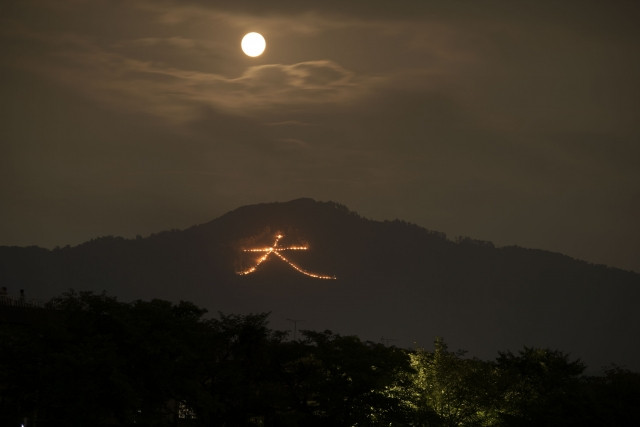
On the last night of Obon, another fire is lit, this time to bid the ancestral spirits farewell and to pray for them to return safely. This is sometimes done in large-scale events like giant bonfires. Kyoto’s Gozan no Okuribi and Kyushu’s Spirit Boat Procession (Shourou-nagashi) fall in this category.
精霊馬 (Shourou-Uma)
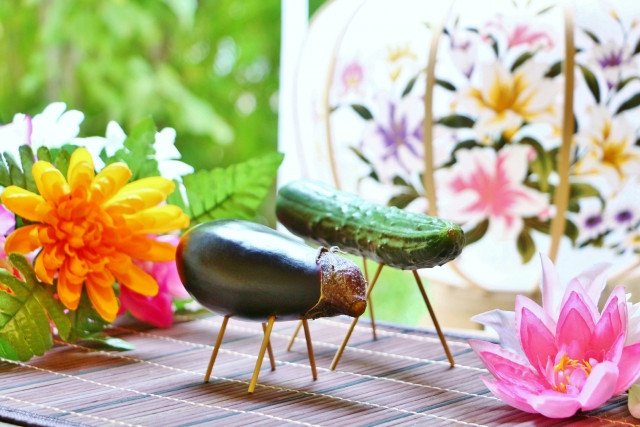
These Shourou-Uma are “spirit horses” for ancestors to ride, so that they can quickly come and go during Obon. Horses made from cucumbers and cows made from eggplants are commonly displayed near the Mukaebi and Okuribi. There are also customs of burning them at home or at a temple, burying them in the ground, or setting them off in the river or sea.
The cucumber horse with its slim body is believed to be fast, and so is placed during Mukaebi so that the spirits can quickly come home. Whereas, the eggplant cow with its thick body allows ancestor spirits to bring back many of the offerings and so is best displayed during Okuribi.
Some regions have the meanings in reverse, while some places do not practise displaying spirit horses.
盆踊り (Bon Odori)
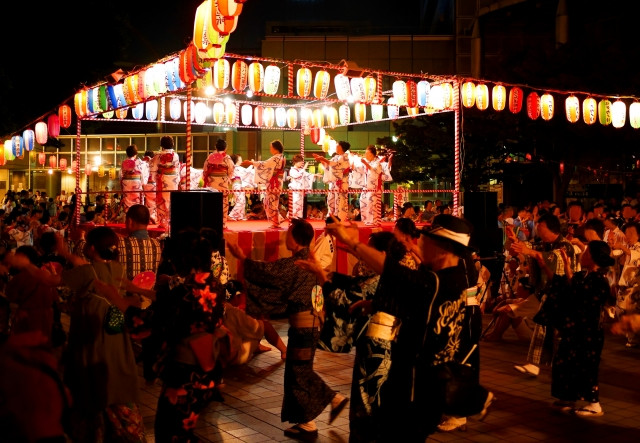
Bon Odori, aka “Bon Dance” is a traditional dance performed for Obon. It has been practised for over 600 years with different regions having its own style of dance. Traditionally, the dance is performed to welcome back and also to send off the spirits of ancestors. More on this below.
灯籠流し (Tourou-nagashi)
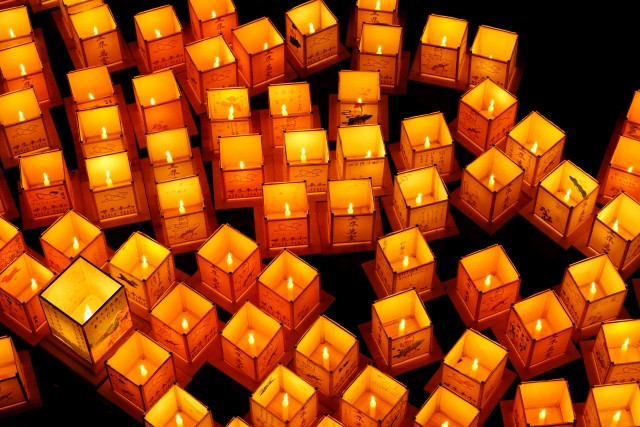
Tourou-nagashi is a ceremony done at the end of Obon as part of Okuribi. 灯籠 (Tourou) means lantern, and 流し (nagashi) from 流す (nagasu) means “float” or “set adrift”. Floating lanterns are released on bodies of water, such as rivers or lakes, and people watch as they slowly drift away. It is practised in some regions in Japan, like Kyushu. It is believed that they symbolise the spirits’ peaceful journey back to the other world.
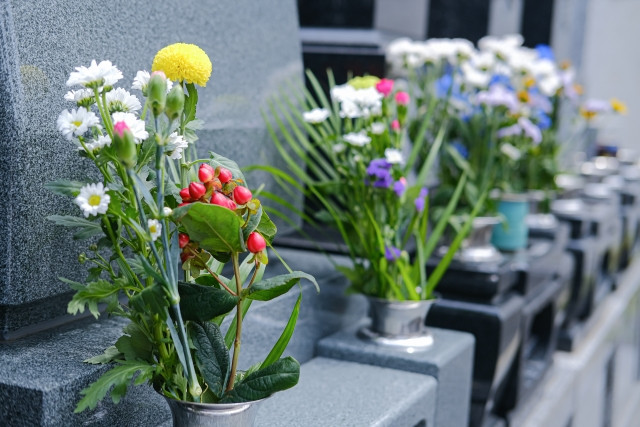
Other Obon customs and traditions include grave visiting, shrine or temple visitation, and making offerings of food, fruits, vegetables, and/or dumplings to ancestors.
Bon Odori, The Dance to Welcome Ancestral Spirits
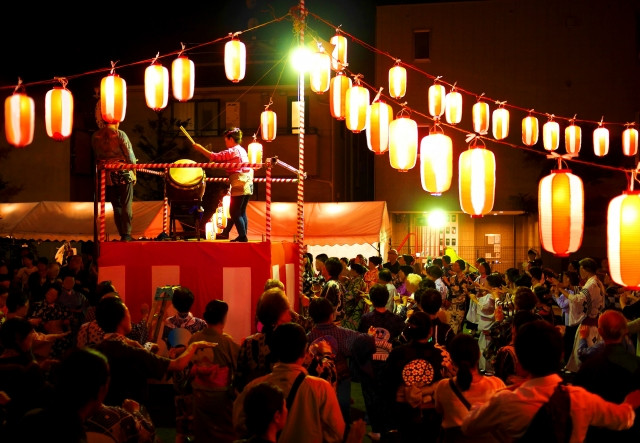
盆踊り (Bon Odori), or the “Bon Dance”, is a traditional Japanese folk dance that is performed for the Obon festival. It is a lively and festive dance that holds deep cultural and historical significance, considered by many to be the highlight of Obon.
Bon Odori dances vary in style and choreography across different regions of Japan, each with its own unique music, steps, and costumes. The music for Bon Odori is typically played by a live ensemble using traditional instruments like taiko drums, shamisen, and flute. An upbeat and cheerful melody makes for an energetic atmosphere.
The dance steps are incredibly simple with movements such as “harvesting rice” or “scooping mud” to match the lyrics. This makes it easy for people of all ages and backgrounds to join in on the dance, making it a community celebration that fosters a sense of togetherness and joy. Just by watching the dancers and trained performers, you can easily copy the steps and move to the beat.
Traditionally, Bon Odori is performed to welcome and entertain ancestral spirits that return to visit their families during the Obon festival, as well as a send off when they go back.
日本三大盆踊り Japan Three Great Bon Odori
Bon Odori Festivals are held across Japan, but these 3 in particular are well-known for being “the most traditional and large scale” (※1).
※1 日本全国「三大祭」ガイド, “日本三大盆踊り”
阿波踊り(Awa Odori) - Tokushima Prefecture
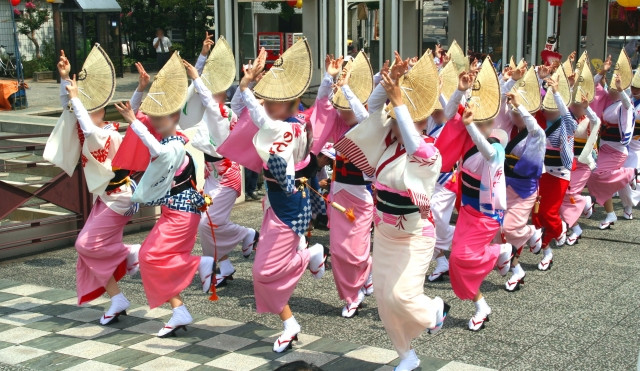
Awa Odori is the Tokushima Prefecture’s style of Bon Odori. Awa Odori can be said to be the most famous of the Bon Dances that exists, so famous that it represents Bon Odori itself. The Awa Odori Festival in Tokushima is the largest in Japan, and is also one of the Shikoku Region’s Three Great Festivals. Other cities in Japan, including Tokyo, also hold Awa Odori festivals.
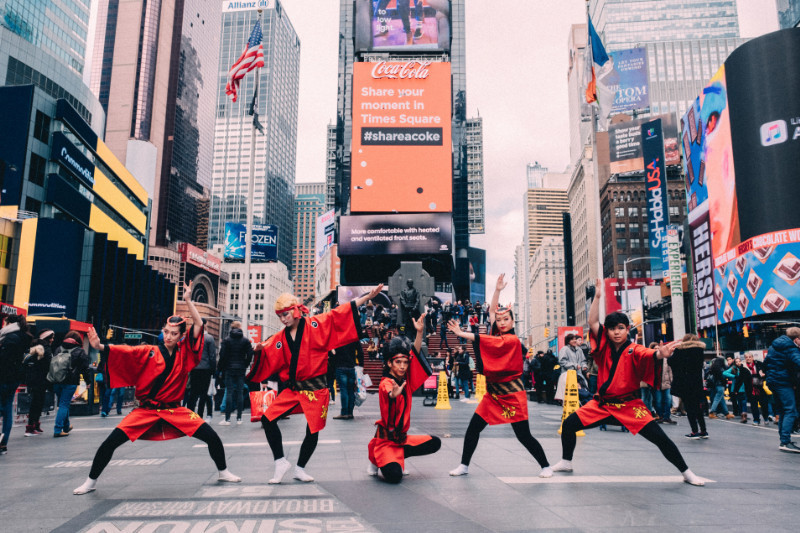
It seems like the Awa Odori we know now is very different from what it used to be. The current Awa Odori, with its fixed steps, was only introduced in the 1960s to make it more tourist-friendly!
Awa Odori Group Takarabune tells us what the original Awa Odori was like, and how they are working to bring it back:
Awa Odori is Japan’s Party Dancing Culture, Takarabune Tells Us the 3 Charms of Awa Odori.
郡上踊り (Gujou Odori) - Gifu Prefecture

Gujou Odori is said to have started as a Bon Dance around the Edo period. That’s a history of over 400 years, just like Awa Odori. Not only is Gujou Odori designated as a National Important Intangible Folk Cultural Heritage, it was also recently added to UNESCO’s List of the Intangible Cultural Heritage of Humanity with 40 other folk dancesm known collectively as “Furyu-odori”.

Source: http://www.gujohachiman.com/kanko/odori_e.html
Gujou Odori stands out as the longest Bon Odori festival in Japan, lasting over 30 nights from mid-July to the first weekend of September. The peak of the festival is the 4 nights of Obon from August 13 to 16 when people dance from night to the next morning. This 4 day festive period is thus also known as 徹夜踊り (tetsuya-odori), aka “Overnight Dance”.
※ Gujo-Hachiman, “Gujo Odori”
西馬音内の盆踊り (Nishimonai no Bon Odori) - Akita Prefecture

Nishimonai no Bon Odori is one of the oldest Bon Odori that has been practised in Japan. There is no record of when it started, but the earliest records of it being performed is during the late Kamakura Period (1300s) by monks to pray for good harvest. It is also registered collectively as a “Furyu-odori” in UNESCO (refer above).
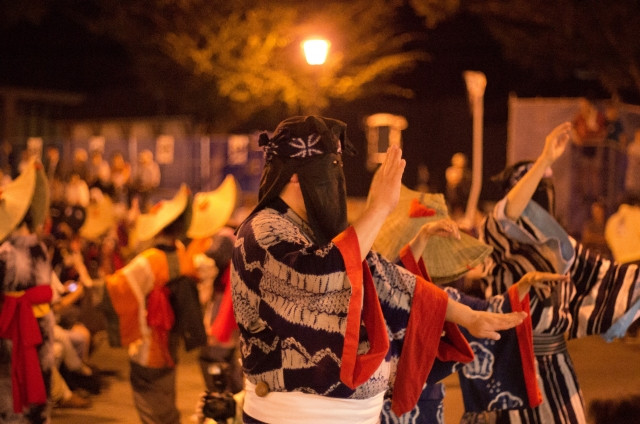
Nishimonai no Bon Odori is characterised by dancers who cover their faces with wove straw hats called 編み笠 (amigasa), or black hoods known as 彦三頭巾 (hikosazukin) - the hood entirely conceals the face except for eye slits. The dance, known as “亡者踊り (mouja-odori) - dance of the dead”, is characterised by its graceful rural Katagata-style and traditional instruments accompaniment.
※日本全国「三大祭」ガイド, “日本三大盆踊り”
There are many other Bon Odori festivals held across Japan. Nowadays, it is said that Bon Odori has lost its religious and historical significance, having been reduced to an event for summer festivals, aka 夏祭り (natsumatsuri). This may be the case for certain events, but there are still many places, shrines & temples that hold Bon Odori true to its roots.
During the Obon period, it is not uncommon to come across a small shrine or temple holding a small, almost private-like, Bon Dance to celebrate the ancestral spirits. Compared to large-scale major festivals, these have a mysterious almost spiritual atmosphere.
Bon Odori and Obon Around the World
Bon Odori and Obon, while deeply rooted in Japanese culture, have also spread beyond Japan's borders and are celebrated by Japanese communities and enthusiasts around the world. Many of these celebrations have lost the religious and historical meaning behind Bon Odori and Obon, and are merely a method of experiencing and promoting Japanese culture.
Some famous Bon Odori Festivals outside Japan include:
Bon Odori in Malaysia
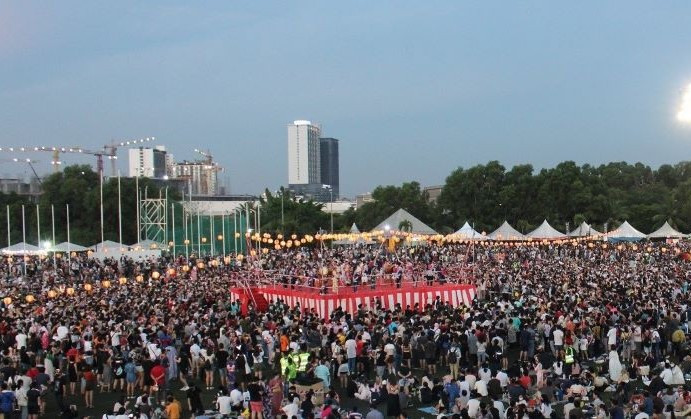
Source: https://www.jckl.org.my/en/events/bon_odori
There are 2 large-scale Bon Odori events in Malaysia; in the states of Selangor and Penang. Bon Odori Selangor was first held in 1977 for Japanese expatriates to introduce Japanese culture to their children, the event has now grown into one of the most anticipated Japanese events in Malaysia. Held annually in Shah Alam, over 30,000 people gather to participate in the festivities. Following its popularity, other Bon Odori events came to be held in Penang (whose participants also count up to 30 thousand and more) and Sabah.
Bon Odori in Malaysia focuses more on the Japanese cultural aspects, providing Malaysians with the opportunity to rent yukata, sample Japanese cuisine, dance the Bon Dance, and have a feel of what summer matsuri is like in Japan. Many Japanese companies take this opportunity to promote their products and services.
※ The Japan Club of Kuala Lumpur, “Bon Odori”
Bon Odori in the United States
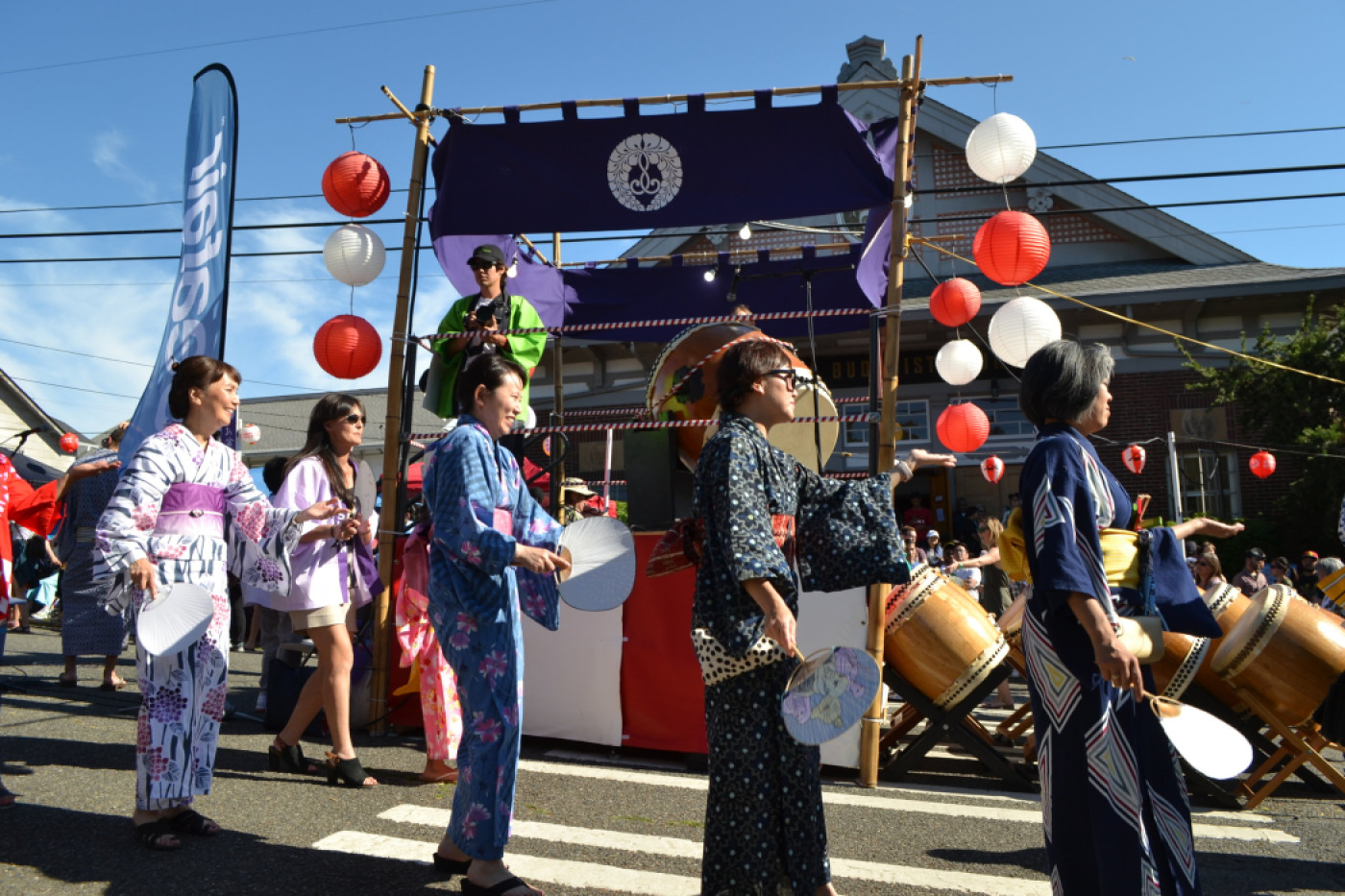
Source: https://www.jcccw.org/nikkei-news/2018/7/23/celebrating-and-remembering-ancestors-during-obon-season
Bon Odori is celebrated in various parts of the United States, but especially in areas with a significant Japanese-American population. Japanese-Americans are spread out over the States but there are bigger gatherings of communities in California and Hawaii. Hawaii, in particular, was where Bon Odori celebrations were first mentioned in a Yamato Shimbun Newspaper published in 1905. Therefore, California and Hawaii are the focus of Bon Odori celebrations, and Washington too.
In the United States, whether Bon Odori is celebrated for its Buddhism aspects depends entirely on the respective events. Some stay true to the religious and historical significance of Obon, while some are for enjoying Japanese culture and to experience the recreation of a Japanese summer festival (natsu-matsuri). Events may feature traditional Japanese foods as well as Japanese-American food. Bon Odori is usually scheduled on weekends at any time between the months of July to September.
If you are interested in experiencing Bon Odori in the United States, there is a map prepared by Japanese-City.
※ Discover Nikkei, “Gathering of Joy: A History of Japanese American Obon Festivals and Bon Odori”
Hungry Ghost Festival in China, Taiwan, Malaysia, etc. Chinese Communities
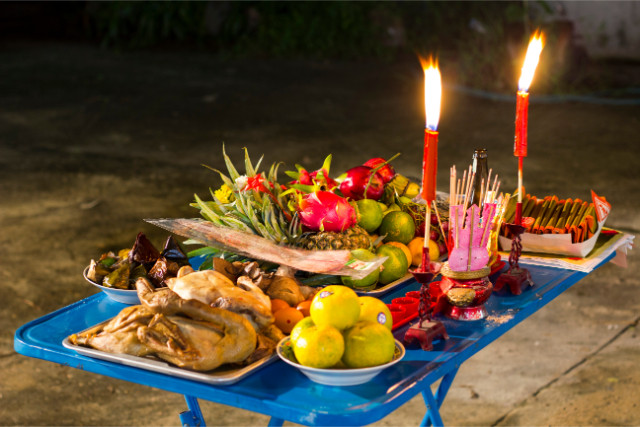
The Hungry Ghost Festival, known as 中元节 (zhōng yuán jié) in Taoism and 盂兰盆节 (yú lán pén jié) in Buddhism, is basically Obon. It is also centred on the 15th night of the 7th month of the lunar calendar, with the entire lunar 7th month regarded as the Ghost Month, aka 鬼月 (guǐ yuè).
The term お盆 (Obon), or 盆 (Bon), is an abbreviation of the name of a Buddhist festival called 盂蘭盆会 (urabone).
Japan’s Obon originated from China’s Hungry Ghost Festival. There are significant differences between both events however, where Obon is considered a joyous event to celebrate the reunion of family members (both dead and alive), the Hungry Ghost Festival is not a particularly happy event.
In Chinese culture, the Ghost Month is a time when the gates of hell are opened allowing ghosts and spirits out to our realm. These ghosts from hell are unhappy spirits who have no descendents, or whose descendants do not, make offerings to them. They are lonely and hungry ghosts, thus the term Hungry Ghost Festival. To ward off these hungry ghosts from invading homes and bringing misfortune, families make offerings of food, burn incense & joss sticks, and burn fake money & papier-mache material items. This works to appease the spirits.
In addition to that, there is also strong superstition attached to the Ghost Month. Many Chinese avoid speaking about death throughout the month, as well as steer clear of dangerous activities that may incite death like travelling by plane, extreme sports, etc. Some families also practise vegetarian diets throughout the month. Considered an unfortunate month, celebrations like marriages are rarely held, and even child births are postponed.
Interesting how 2 celebrations with the same origins can be so different.








.jpg)

.jpg)
.jpg)








 (2).png)














